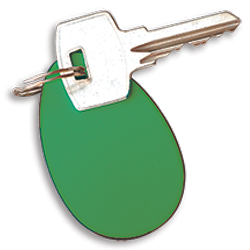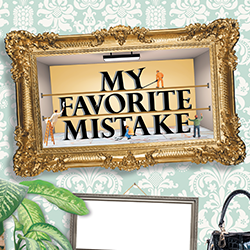|
Help!

MATERIAL charges
 I'm confused by some of the material charges on the installation-and-dismantle invoice from my exhibit house. What are some common materials found on I&D invoices and how are they used in relation to an exhibit? I'm confused by some of the material charges on the installation-and-dismantle invoice from my exhibit house. What are some common materials found on I&D invoices and how are they used in relation to an exhibit?
 Rather than stating an exact I&D cost, most exhibit houses will give you an I&D estimate for time and materials prior to the show and then send you a final invoice afterward. Certainly, there are a number of variables that can affect the amount of labor time required, including everything from broken hardware and scratched graphics to major snafus like a missing piece of your shipment. But many of these same variables – as well as countless others – can affect the materials portion of that initial estimate. Thus, the amount or type of materials required to install, dismantle, and ship your exhibit can vary considerably from show to show.
Rather than stating an exact I&D cost, most exhibit houses will give you an I&D estimate for time and materials prior to the show and then send you a final invoice afterward. Certainly, there are a number of variables that can affect the amount of labor time required, including everything from broken hardware and scratched graphics to major snafus like a missing piece of your shipment. But many of these same variables – as well as countless others – can affect the materials portion of that initial estimate. Thus, the amount or type of materials required to install, dismantle, and ship your exhibit can vary considerably from show to show.
For example, it's not unusual for pieces, parts, tools, and supplies to simply go missing – whether that means they were accidentally left at the last trade show, stolen, or lost in transport. Other times, existing materials wear out or get damaged. And often, exhibit materials are used and thrown away after each show, which means you're charged for them again and again. So no matter how you slice it, material charges are a necessary evil that goes hand in hand with exhibit ownership.
That said, it's important to understand exactly what you're paying for – and to ensure that you're not being charged for items that weren't actually used or for materials you furnished yourself. So here's a brief rundown of the most common material charges you'll typically find on a final show invoice, divided into two use-related categories: construction and packing.
Construction
This category of materials includes common items laborers might need to install and dismantle your booth, including those used to replace or repair missing or damaged exhibitry.
 Visqueen – If your exhibit plan includes carpet or any type of easily damaged or soiled flooring, you'll likely see Visqueen (or Visquine, a common misspelling) on your invoice. Sold on rolls and available in a variety of lengths, widths, and thicknesses, Visqueen is actually a brand of polyethylene plastic sheeting produced by British Polythene Industries Ltd. After your flooring is laid, Visqueen is stretched across it and taped down to help prevent the flooring from getting dirty or damaged during setup. It also allows laborers to slide exhibit components across it from one area to another, as opposed to having to lift each item completely off the ground to reposition it. Once installation is complete, the Visqueen is pulled up to reveal your flooring underneath. Visqueen – If your exhibit plan includes carpet or any type of easily damaged or soiled flooring, you'll likely see Visqueen (or Visquine, a common misspelling) on your invoice. Sold on rolls and available in a variety of lengths, widths, and thicknesses, Visqueen is actually a brand of polyethylene plastic sheeting produced by British Polythene Industries Ltd. After your flooring is laid, Visqueen is stretched across it and taped down to help prevent the flooring from getting dirty or damaged during setup. It also allows laborers to slide exhibit components across it from one area to another, as opposed to having to lift each item completely off the ground to reposition it. Once installation is complete, the Visqueen is pulled up to reveal your flooring underneath.
 PVC/Foam/Polymer Sheets and Rolls – Exhibit structures and graphics are often made out of PVC or foam-based products, each of which has a specific brand name. For example, Sintra sheets are sometimes paired with aluminum framing systems to create walls, panels, desks, etc., and Lexan or Plexiglas is used with other graphics applications to create light boxes and semitranslucent color graphics panels. During installation, then, laborers might have to replace these PVC or foam-based elements if they've been damaged or misplaced during transit. Generally speaking, if you see the following items on your invoice, they were most likely used to replace an existing exhibit element and/or create a plan B patch for an unexpected mishap: Komatex, Sintra, Gatorfoam, Lexan, Styrene, Duraflex, Fome-Cor, and Plexiglas. You might also see more generic terms such as foam core, foam board, mounting board, plexi, etc., which are materials that typically serve the same purpose as the aforementioned brands. PVC/Foam/Polymer Sheets and Rolls – Exhibit structures and graphics are often made out of PVC or foam-based products, each of which has a specific brand name. For example, Sintra sheets are sometimes paired with aluminum framing systems to create walls, panels, desks, etc., and Lexan or Plexiglas is used with other graphics applications to create light boxes and semitranslucent color graphics panels. During installation, then, laborers might have to replace these PVC or foam-based elements if they've been damaged or misplaced during transit. Generally speaking, if you see the following items on your invoice, they were most likely used to replace an existing exhibit element and/or create a plan B patch for an unexpected mishap: Komatex, Sintra, Gatorfoam, Lexan, Styrene, Duraflex, Fome-Cor, and Plexiglas. You might also see more generic terms such as foam core, foam board, mounting board, plexi, etc., which are materials that typically serve the same purpose as the aforementioned brands.
 Hardware – You can almost bet that at some point during installation, laborers will need extra hardware, which could include everything from nuts and drywall screws to carriage bolts and mending plates. Even if every nut and screw is accounted for when your exhibit leaves your exhibit house, such hardware can jiggle loose and fall off or bend beyond use over the course of a seemingly simple shipment. Plus, laborers might need extra hardware to craft plan B solutions and/or make last-minute fixes. Often, you'll simply see this charge appear as "hardware" or "supplies" on your invoice. Hardware – You can almost bet that at some point during installation, laborers will need extra hardware, which could include everything from nuts and drywall screws to carriage bolts and mending plates. Even if every nut and screw is accounted for when your exhibit leaves your exhibit house, such hardware can jiggle loose and fall off or bend beyond use over the course of a seemingly simple shipment. Plus, laborers might need extra hardware to craft plan B solutions and/or make last-minute fixes. Often, you'll simply see this charge appear as "hardware" or "supplies" on your invoice.
 Paint and Mud – Particularly for build-and-burn exhibits used in international shows, you might see "paint" and "drywall mud" on your final invoice, since much of the construction involved in these booths is completed on site and involves painting traditional construction surfaces such as wood and sheetrock. However, your exhibit house may also list "paint" if it used touch-up paint to help hide laminate chips or damage. Paint and Mud – Particularly for build-and-burn exhibits used in international shows, you might see "paint" and "drywall mud" on your final invoice, since much of the construction involved in these booths is completed on site and involves painting traditional construction surfaces such as wood and sheetrock. However, your exhibit house may also list "paint" if it used touch-up paint to help hide laminate chips or damage.
 Tape – I&D crew members almost always have a roll of some kind of tape in their pockets. The Swiss Army Knife of exhibiting, tape comes in many varieties, almost all of which serve some purpose to the exhibitor. Masking or painting tape is used for last-minute paint- or graphics-related repairs, electrical tape secures wiring, aircraft tape (a thin red tape that's nearly impossible to remove) offers almost permanent fastening, double-sided tape secures the carpet to the convention-center floor, and duct tape, well, that fixes everything. Another roll-based product readily used in exhibits is hook-and-loop fastener. These days, hook and loop is used to
attach graphics or fabric to framing systems for quick, easy setup. But it doesn't last forever, so you'll likely need a couple of rolls as backup. Tape – I&D crew members almost always have a roll of some kind of tape in their pockets. The Swiss Army Knife of exhibiting, tape comes in many varieties, almost all of which serve some purpose to the exhibitor. Masking or painting tape is used for last-minute paint- or graphics-related repairs, electrical tape secures wiring, aircraft tape (a thin red tape that's nearly impossible to remove) offers almost permanent fastening, double-sided tape secures the carpet to the convention-center floor, and duct tape, well, that fixes everything. Another roll-based product readily used in exhibits is hook-and-loop fastener. These days, hook and loop is used to
attach graphics or fabric to framing systems for quick, easy setup. But it doesn't last forever, so you'll likely need a couple of rolls as backup.
Packing
This category includes the materials your I&D crew will need to prepare an exhibit for return shipment. Common packing materials include cardboard/foam wrap, shrink-wrap, and banding.
 Shrink-wrap – When your exhibit has been packed onto pallets and it's ready for transport, your I&D crew will typically wrap each pallet in shrink-wrap, which is basically industrial style Saran Wrap. This plastic film comes in various-size rolls and a handful of colors. While shrink-wrap keeps your property from shifting around on a skid and keeps it clean during shipping and storage, some exhibitors also use it as a theft deterrent, enlisting black shrink-wrap to hide valuable products or exhibit components from view. Shrink-wrap – When your exhibit has been packed onto pallets and it's ready for transport, your I&D crew will typically wrap each pallet in shrink-wrap, which is basically industrial style Saran Wrap. This plastic film comes in various-size rolls and a handful of colors. While shrink-wrap keeps your property from shifting around on a skid and keeps it clean during shipping and storage, some exhibitors also use it as a theft deterrent, enlisting black shrink-wrap to hide valuable products or exhibit components from view.
 Banding – Banding refers to the thin, usually black, steel strips used to strap down items to a skid so that they don't shift during transit. They're sort of the industrial-strength version of shrink-wrap, only you just need a handful of them to secure your shipment. The bands are usually cinched down with a special tool to ensure that your exhibitry stays firmly in place. Banding – Banding refers to the thin, usually black, steel strips used to strap down items to a skid so that they don't shift during transit. They're sort of the industrial-strength version of shrink-wrap, only you just need a handful of them to secure your shipment. The bands are usually cinched down with a special tool to ensure that your exhibitry stays firmly in place.
 Slip Sheets and Foam Wrap – To prevent damage to easily scratched surfaces – such as laminated counters, graphics, etc. – your crew will often insert sheets of cardboard, aka slip sheets, between panels and/or wrap each item in foam wrap. Some of these materials can be reused, but you're likely to need a new supply every couple of shows at least. Slip Sheets and Foam Wrap – To prevent damage to easily scratched surfaces – such as laminated counters, graphics, etc. – your crew will often insert sheets of cardboard, aka slip sheets, between panels and/or wrap each item in foam wrap. Some of these materials can be reused, but you're likely to need a new supply every couple of shows at least.
While some exhibit houses will charge you for every item on this list, it's not uncommom for material costs to be folded into other charges. Armed with the aforementioned info, however, your next I&D invoice should be void of any material-related mysteries.
— Tath Ashcraft, account executive, Sparks Marketing Group Inc., Las Vegas
|




 I'm confused by some of the material charges on the installation-and-dismantle invoice from my exhibit house. What are some common materials found on I&D invoices and how are they used in relation to an exhibit?
I'm confused by some of the material charges on the installation-and-dismantle invoice from my exhibit house. What are some common materials found on I&D invoices and how are they used in relation to an exhibit? Rather than stating an exact I&D cost, most exhibit houses will give you an I&D estimate for time and materials prior to the show and then send you a final invoice afterward. Certainly, there are a number of variables that can affect the amount of labor time required, including everything from broken hardware and scratched graphics to major snafus like a missing piece of your shipment. But many of these same variables – as well as countless others – can affect the materials portion of that initial estimate. Thus, the amount or type of materials required to install, dismantle, and ship your exhibit can vary considerably from show to show.
Rather than stating an exact I&D cost, most exhibit houses will give you an I&D estimate for time and materials prior to the show and then send you a final invoice afterward. Certainly, there are a number of variables that can affect the amount of labor time required, including everything from broken hardware and scratched graphics to major snafus like a missing piece of your shipment. But many of these same variables – as well as countless others – can affect the materials portion of that initial estimate. Thus, the amount or type of materials required to install, dismantle, and ship your exhibit can vary considerably from show to show.


